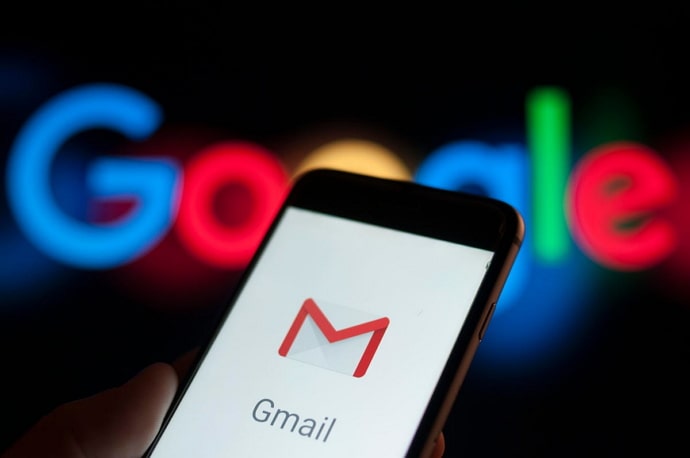Today’s professional world thrives mainly on two forms of communication: emails and social media. While these two go hand in hand to facilitate conversations, they are completely different from each other. Social media– the ever-expanding hang-out place for netizens– is the informal, casual side. But emails, on the other hand, are often reserved for some strictly professional, formal conversations. And the communication on each of these platforms is often starkly different from the other.

Well, social media is not a problem at all. We all have been using it for a time too long to remember. We can speak our hearts out on social media without thinking much.
But when it comes to emails, we all fall short of familiarity.
For example, you might receive a mail asking you to confirm the receipt of that mail. If you have received such an email, you might be confused about the appropriate reply, especially if you haven’t received this kind of mail before.
But your confusion comes to an end now. In this blog, we will tell you how you can reply formally to such emails in a way that’s best for both you and the other person.
What does this email mean?
If you are not sure how to reply to an email that says, “Please confirm the receipt of this mail,” it’s important to know what this email means. And fortunately, it’s not complicated at all.
The person on the other end emailed you, and they just want to ensure that you have read it. But how would they know that you have read their mail? Emails don’t have blue ticks like WhatsApp messages. How will they make sure that their message has been received and read by you?
The only option is to directly ask the recipient whether they have read the mail. So, instead of asking this question in a follow-up mail, it’s better to ask for confirmation in the main email itself. And that’s why the person included this message in their email.
So, what can you do?
Simple– you just have to tell them that you have received their email. Keep reading to know how you can do that.
How to Reply Formally to an Email Saying “Please Confirm the Receipt of this Mail”
If you receive this email, you just need to reply with an acknowledgment mail. In other words, you need to acknowledge– or confirm– that you have received the mail.
Now, there can be many ways to write an acknowledgment email.
Since the purpose of an acknowledgment mail is only to inform the other party about the receipt of an email, these emails are generally short and do not contain any other information.
You can use any of these templates to write an acknowledgment mail:
Example 1:
I hereby confirm that I have received your email regarding [the subject of the main email you received] on [date of receiving the email].
Example 2:
I acknowledge the receipt of this mail.
Example 3:
Thanks for your mail regarding [subject of the previous mail]. I received it on [date of receipt of the mail].
Example 4:
If you want to add another related query or message along with the acknowledgment, the following is a possible way to formulate the mail:
I acknowledge that I received the email concerning [insert the subject line of the mail you received] on [date you received the mail].
On a different note, I want to ask about/express my views on/provide my feedback on/bring your attention towards [the topic you want to talk about]. As mentioned earlier, these templates are a few possible ways to express your reply to the mail.
There is no single correct way of writing an acknowledgment mail; you can also write it in any other way.
You can write long emails, short emails, or, if it suits you, even reply with a single word: Received. It’s just a matter of perspective and choice.
How to make sure that your email sounds formal
Any kind of formal communication has some characteristic features and traits that make it different from the casual, informal conversations you have with your friends.
Make your message to the point:
The most important part of any formal communication is that it must be precise and to the point. That means you have to leave behind fluff, unnecessary information unrelated to the matter at hand, like personal talk and gossip.
Avoid too many informal words:
On top of keeping your emails precise, you should also avoid the use of some common words you use in your informal tongue. Shortened words are generally avoided. This means you should avoid using words like “gonna”, “wanna,” “gotta,” or “gotcha” while addressing your boss or colleagues.
Don’t make it unnecessarily difficult:
A common misconception about formal conversations is that they require heavy, complex, more technical words. Along the same lines, it is also believed that you need to write complex sentences. However, this notion is completely baseless and unnecessary.
On the other hand, the use of complex words will only prevent people from understanding you properly. How can you communicate effectively if people can’t understand what you say?
Therefore, here is the conclusion: While writing a formal email or message, you need to avoid unnecessary information and include only the things that matter. Avoid using chatty, colloquial, or shortened words, but don’t necessarily use too many complex words or sentences.
In the end
Writing and replying to formal emails can be difficult and confusing if you are not well-versed in formal communication. One such confusing situation can arise when someone asks you to “confirm the receipt” of an email they sent you.
By following the templates mentioned in this blog, you can easily write an acknowledgment email. You can use any of the templates we have mentioned, as each of them is more or less the same, just different to read.
Moreover, you can also apply the tips mentioned above to write and respond to formal emails efficiently.
If you like this blog, you can’t miss our other blogs, either. Just make sure to bookmark our site, so you never forget us.
Also Read:





 Bitcoin
Bitcoin  Ethereum
Ethereum  Tether
Tether  XRP
XRP  USDC
USDC  Lido Staked Ether
Lido Staked Ether  TRON
TRON  Dogecoin
Dogecoin  Cardano
Cardano